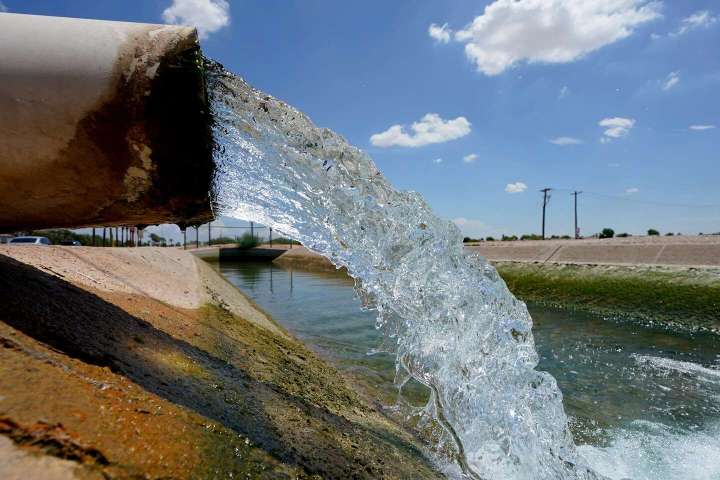The Rev. William Dodd was not above making the occasional fraudulent loan application, which is how he wound up in London’s Tyburn Prison in 1777 under sentence of death. An unusually eloquent plea for mercy, supposedly of his own composition, failed to save his life. Later, the great English writer Samuel Johnson, who had secretly written the appeal, tried to insist that Dodd was capable of such elegant prose. After all, Johnson reasoned, “when a man knows he is to be hanged in a fortnight, it concentrates his mind wonderfully.”
Helping farmers is key to easing the Colorado River crisis

By the same logic, I optimistically predict a great leap forward in water conservation strategies arising from the parched American West. Such metropolitan areas as Los Angeles, Phoenix and Las Vegas, along with some of the world’s most productive farmlands, face strangulation at the end of an empty water hose.
The seven states watered by the mighty Colorado River long ago overtaxed the channel’s annual supply. Years of runaway growth, persistent drought and wasteful misuse of water have relentlessly drawn down the reservoirs that store the region’s lifeblood and power its electricity generating stations.
Now is the moment for concentrated minds. The water crisis predicted for decades in the booming West has arrived. Despite past efforts at conservation, Lake Mead and Lake Powell, built at opposite ends of the Grand Canyon, are at their lowest levels since they were originally filled in the 1930s and 1960s, respectively. They are perilously close to becoming “dead pools” — a term used in the hydropower business to describe reservoirs too empty to push water through the turbines.
Follow David Von Drehle‘s opinions
FollowHard as it is to imagine Las Vegas without lights, that’s nothing compared with imagining Phoenix without air conditioning. The river that fills the reservoirs that power the dams that electrify the Southwest cannot be allowed to go dead.
So the Interior Department has stepped in to focus some thinking. The Colorado River states must reduce overall water use by as much as 4.1 million acre-feet per year. That’s enough to submerge the state of Connecticut under 15 inches of water. Interior immediately began closing the tap for Arizona, Nevada and the nation of Mexico. Arizona will lose an astonishing, and painful, 21 percent of its water allocation under the new regulations.
People can argue about how much of this disaster is caused by climate change and how much stems from a long-ago miscalculation of the average flow of the Colorado River. But no one can look at the lakes draining away like bathtubs with the plugs pulled and deny that more water is leaving for downstream uses than arriving from the alpine snows that feed the Colorado headwaters.
Will the prospect of disaster concentrate minds on solutions?
I see reasons to be hopeful. Between the bipartisan infrastructure law passed last year and the climate change initiative passed this year, some $12 billion in new federal funds has been targeted at the Colorado River water crisis. Careful use of that money can spur a lot of experiments in water conservation.
With concentrated minds, the United States could race ahead of the world in terms of smart water use. We should aim to outdo Singapore on water recycling, outdo Israel on desalination and outdo China on water conservation.
But the future of America’s water cannot be won without changing America’s farms. Decades of explosive population growth in the Colorado River states has not changed the basic fact that most of the water goes to agriculture. The region’s farmers deliver magnificent crops to feed and clothe the nation. But they waste a lot of water doing it.
How much? Wrap your brain around this: All the millions of people filling water bottles and flushing toilets and watering lawns in the booming Southwest; all their golf courses and city parks and flower beds and carwashes — all these add up to about 10 percent of water use in the region. Agriculture amounts to 80 percent.
Robert Glennon of the University of Arizona shows what a concentrated mind can do under the threat of demise. In a July essay for Governing.com, the professor urges direct investment by cities in more efficient farms. Glennon recognizes that “drip irrigation” systems save huge amounts of water, but small farmers can’t afford the upfront costs. Farmers who could save water don’t save water — for want of investment.
Glennon suggests that water-starved cities pay to install drip systems. In exchange, the cities would get the water that is saved. Under the threat of dead pools, expect a lot of good thinking like that.






